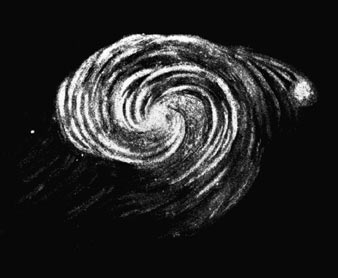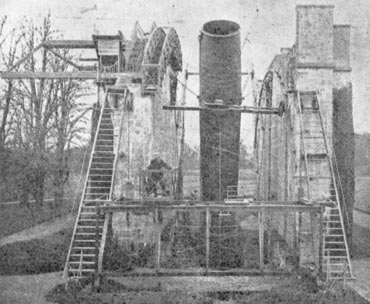This month’s column is a cautionary discussion against aperture fever. Whenever you get the overwhelming desire for a bigger telescope, heed these warnings.
A look at the marketplace, major star parties (such as Stellafane, RTMC and the Winter Star Party) and in a small number of amateur astronomer’s backyards, there are telescopes ranging in size from 10” or larger, encompassing two families of large telescopes, the large Dobsonian and the SCT.
The most common large telescopes for visual use are the 10” to 12” Dobsonian telescopes and the 10” to 12” SCTs. 10” Dobs and 10”-11” SCTs are basically the practical upper limit to portable personal telescopes. Larger than these sizes results in telescopes that are difficult to transport and multiple people to assemble at a remote site.
Occasionally, a 16” Dobsonian shows up as a commercial product. There are off-the-shelf commercially available 13” or larger Dobs and 14”-16” Schmidt-Cassegrain telescopes that are available from both the “Big Two” manufacturers and some smaller suppliers. This category of large backyard telescopes are at best transportable, although the size and bulk makes them somewhat cumbersome and sometimes needing more than one person to set up. There are no commercially available refractors in this aperture grouping. For the record, any 6” or larger refractor becomes as cumbersome to transport as a 16” SCT because of the large mounting requirements.

Then there are the “Ferrari’” and “Rolls Royce” of visual use amateur telescopes. Included in this grouping are the truss construction large Dobsonians of apertures from 13” to 24” or larger. These telescopes are made by artisans at small telescope companies and are made to order. Again, there are no commercially available refractors in this aperture size grouping.
Briefly, there was an attempt by one telescope vendor, Orion, to market 36”, 42”, and 50” Dobsonians! Orion tried to premier their super colossal Dob at NEAF a few years ago, but were unable to get the telescope assembled for the expo. The plan to market these massive monster telescopes was eventually dropped.

Included in this super large telescope family are the 14” and 16” SCTs manufactured by the two major telescope manufacturers. The telescopes at Frederick County Middle School are 16” Meade LX-200 SCTs. One of our former members, John Hershey, is well remembered for his 14 inch Celestron SCT which he would bring to every public outreach that our club held. In order to assemble his telescope at a star party, he had a special mechanical lift that enabled him to hoist the OTA onto his mount. That’s dedication!!!
These large SCTs have all the bells-and-whistles, including GoTo capability and are astro-imaging capable with added accessories. Available with heavy duty field tripods, these superstars of the SCT world are best considered as transportable by a small number of people rather than portable and useable by a single person (with the exception of John). Ideally, these large SCTs lend themselves best to permanent setups in an observatory. There are some rare custom made refractors that equal or exceed 12”, and these are normally mounted under an observatory dome. These telescopes are generally not portable. In military terms, large SCTs are transportable (but only barely). They often require more than one person to set up and disassemble. Our club’s experience with the FCMS 16” SCTs is a perfect case study. We needed four people to lift the telescopes onto the mount drive assembly!
The views through these massive marvels are fantastic, definitely evoking a “WOW” factor through the eyepiece. The increased light gathering enables the observer to see fine tendrils and filaments of nebulosity in emission nebulae, extended views of galaxies and revealing galactic dust lanes, and layer upon layer of starry diamonds within globular clusters.
The largest current record holder for a large backyard telescope is a 70” Dob located in California, built from a military surplus spy satellite mirror. Historically, William Parsons, The Third Earl of Ross, hold the record for the largest amateur telescope, the 72 inch The Leviathan of Parsonstowm.
But there are downsides to the larger telescopes. Many are expensive, with the larger telescopes requiring the additional purchase of a truck or van in order to transport the telescope to a remote site. The larger Dobsonians require 8 foot or 10 foot ladders to reach the eyepiece. Many are difficult to setup on a routine basis. Most do not qualify as “grab-and-go” telescopes.
Always remember the telescope salesman’s Golden Rule, the smaller telescope that gets used a lot sees more than the bulkier, difficult to use larger telescope seldom used. That’s why the best selling sizes of telescopes are the 4” refractor, the 8” SCT, and the 10” Dob.

